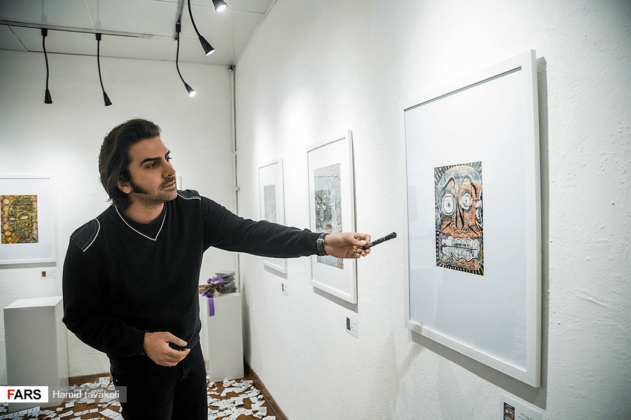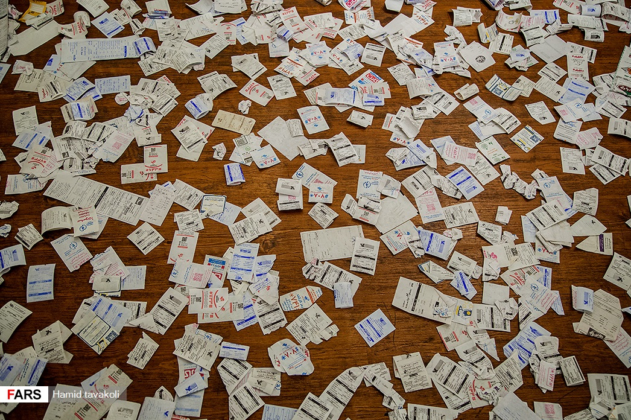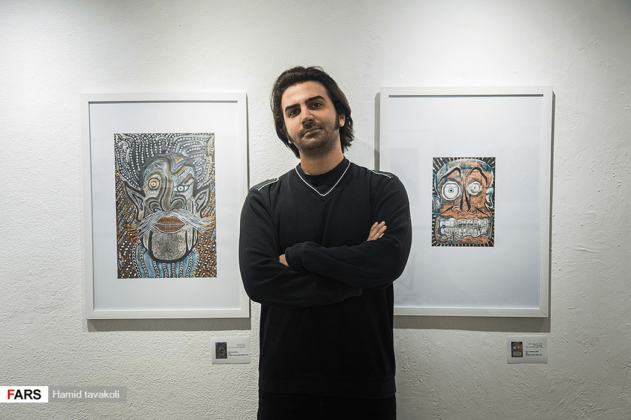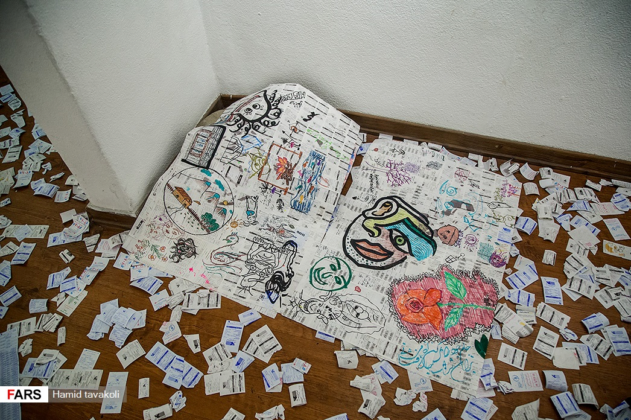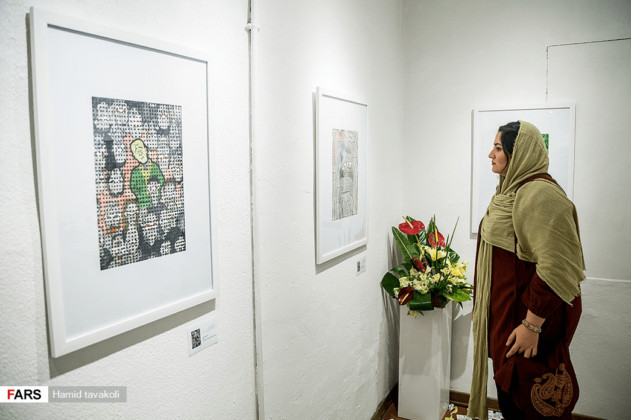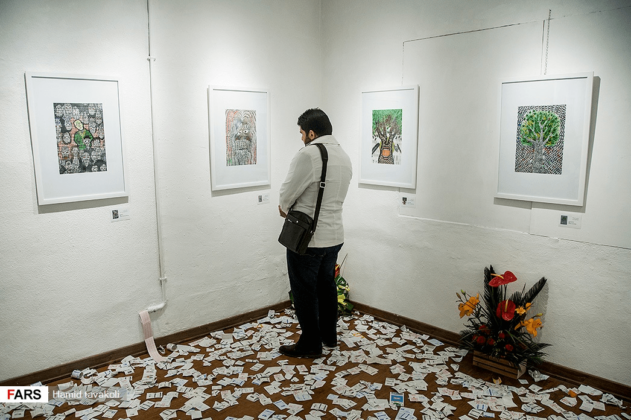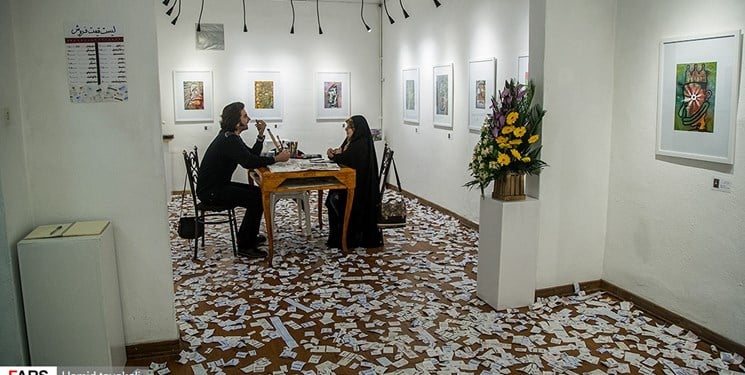Every year, 14,000 tonnes of paper is produced in Iran which is a shocking figure. By producing this amount of paper, an irreparable damage is inflicted on nature.
At the “Recycled Portraits” exhibition held at Sheis Gallery of Tehran, visitors should walk on a bunch of receipt papers to watch the portraits!
In this exhibition, Mohammad Mahdi Sedaqat wants to showcase his illustrations on receipt papers and inform the citizens of what they are doing to themselves and nature.
The painter is 31 years old. He has a BS in agricultural engineering and an MA in illustration. He has also experienced a variety of activities such as TV and video presenting.
What follows are excerpts of his interview with Fars News Agency:
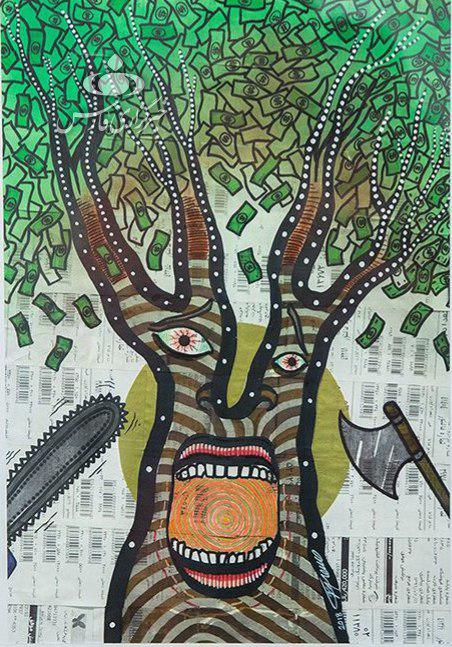
Inspiring Wastes
They caught my attention. They were accumulated, and I had an unpleasant feeling every week when I was throwing them away. Gradually, these papers made me sensitive, especially when I found out that 14,000 tonnes of receipt paper is produced in Iran each year. Not even a percentage of them are recycled. The fact is that the material used on these papers is poisonous. Even worse, people do not think about recycling them, and put them directly in the trash can. All these issues made me not to throw them away any more. Once I had a lot of these papers, I started to paint on them. I started using the paper glue to stick them and my job began!
Q: Don’t you think it is a pity to use your creativity on waste papers?
A: These papers are thermal, and for that reason, after a while the printings disappear. But the writings can be fixed using certain materials and colours. I used the same technique for the works I liked to be lasting. In addition, I wanted to tell the visitors the papers that are now under your feet could have been in an artwork on the wall. Somehow, in this exhibition, the main artwork is the floor of the hall! The problem is that humans separate themselves from nature and do not want to believe they are part of this nature. In fact, the main point illustrated at this exhibition is to rethink what we consider waste. How much waste do we produce? How much of them can be recycled with a little creativity?
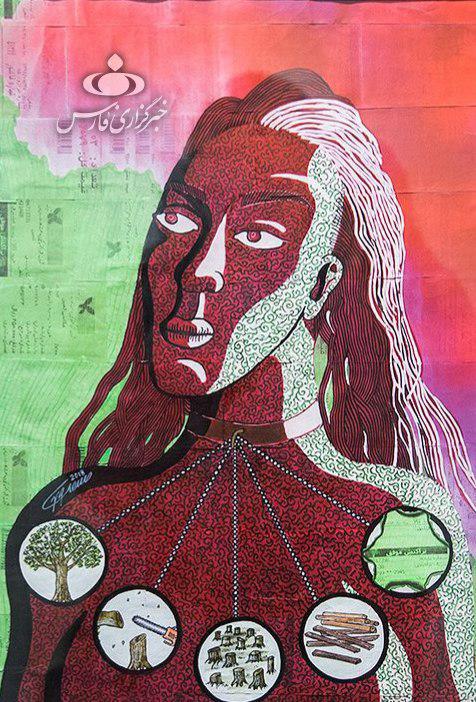
Shopkeepers at Show
When my friends came across this story, their reactions were very positive. Everybody was in contact with me. They did not throw away their papers and kept them for me. My family, friends, relatives and even the baker and supermarket owners helped me! All the papers you see on the floor were stored by these fellows.
Visitors Stunned by Exhibition
“Different people came to visit this exhibition. The youngest and most eager visitor was a 9-year-old boy. He was an artist himself. He really surprised me with his drawings on these papers. These collaborations suggest that visitors have received the message of the fair. These papers must not be produced or disposed of,” said Sedaqat.
Next Show Perhaps with Guitar Strings
“All the story is that I feel pity for my country. In this small space, I have tried to convey my environmental concerns and my worries about the importance of preserving nature. Unfortunately, the receipt papersare not the only problem that threatens our environment. The plains, mountains, forests, seas and farms are filled with nylon bags. For example, in music, strings are one of the things that are constantly used by musicians. As a bass guitar player, I have not been discarding the old strings for ten years. I just thought I could use them in an artwork,” added the artist.
The following are Fars‘s photos of the exhibition, which was held in December 2018:

